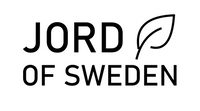Is linen sustainable?

Linen has been used for thousands of years, and today it remains an important fabric in many cultures around the world. It’s also one of the most sustainable materials available, because it grows without pesticides or herbicides.
It's a luxurious fabric, which is great to wear in the summer time or for all year-round on your bed.
The short answer is Yes, linen is sustainable with a sustainability score of 9/10, e.g. very eco friendly. For the long answer, keep reading.
Benefits of linen
Linen is one of the most biodegradable fabrics that exist. It is strong, naturally moth resistant, and when untreated (i.e. not dyed) it is fully biodegradable. It can withstand high temperatures - making it perfect for hot weather. When exposed to moisture it does so without retaining bacteria. An interesting feature is that it gets stronger when wet and also gets softer the more it is used and washed. It simply becomes better for each year that passes. This is why linen can be used by generations.
The flax plant
Linen is made from the flax plant. Historically, each part of the flax plant was used to create various products. In other words, nothing was wasted. The plant is able to grow in poor conditions, using much less water than cotton as it grows. According to the European Confederation of Linen and Hemp, "Across its lifecycle, a linen shirt uses 6.4 liters of water" compared to 2,700 liters for a cotton shirt.
Why is linen sustainable?
1. A natural fiber made from flax
Most of the fabrics we use today are either man made or very chemically intensive to produce. The flax plant on the other side grows without need for fertilizers or pesticides. Hence, it's a renewable resource, fast growing and without damaging the environment..
2. Linen lowers carbon in the atmosphere
Flax can remove 3.7 tons of CO2 from the atmosphere per hectare. This removes roughly 250,000 tons of CO2 each year thanks to flax grown in Europe.

3. Flax requires less water than cotton
Cotton is a very thirsty plant. This can be disastrous for the local populations that grow cotton, often leading to drought and catastrophic habitat destruction. In comparison, natural rainfall is usually enough to irrigate flax plants grown in Europe. In fact, growing flax and weaving it into linen is the least water and energy intensive part of linen clothing’s life cycle.
4. Flax can be grown without fertilizers or pesticides
Flax loves the temperate climates of Western Europe, and requires few to no fertilizers or pesticides to grow. The consequence of this is that flax basically comes close to the organic standard without even trying. Compare this with cotton, which is one of the most chemically intensive crops on the planet.
5. Flax can be grown and produced locally
Europe grows 85% of the world’s flax. Hence, if you live in Europe, the fabric does not need to travel halfway around the world to make it to your home. Less shipping and transportation means that linen releases significantly less CO2 emissions.
6. No waste is left
One of the main reason why linen is a sustainable fabric is that the entire flax plant can be woven into a fiber. This in its turn means almost no waste is left from the spinning and weaving process. If organically processed, without chemicals or dyes, the result is that no water pollution is produced.






Leave a comment